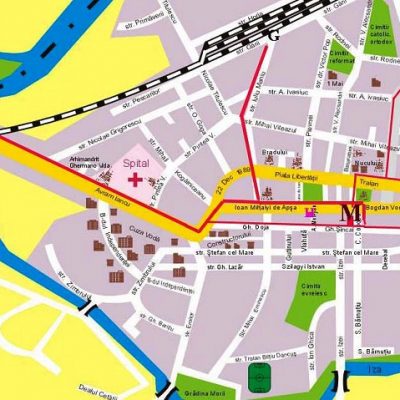The Paupers’ Cemetery is an architectural ensemble dedicated to the memory of the political prisoners who died or were executed in the communist prisons and labour camps or as deportees, and also to the memory of the partisans who were killed in battles with the Securitate.
Work began on the cemetery in 1997, when The Memorial to the Victims of Communism and to the Resistance was declared an “ensemble of national interest” (Law no. 95/1997).
Through Law no. 95, the cemetery was declared part of the Memorial, given that in the 1950s it was here that dozens of political prisoners who had died in Sighet Prison were buried.
It is not known with any certainty how many of the fifty-four prisoners who died in Sighet were buried here and how many were buried elsewhere, as the communists were in the habit of covering their tracks: the names of the dead were neither recorded officially nor marked on their graves. Their graves were made to vanish in time among the hundreds of earlier and later graves, leaving no trace.

Attempts to identify the dead, using lasers and archaeological excavation, have come to nought. However, the Civic Academy Foundation has over the years built this symbolic ensemble dedicated to all the victims of communist repression in Romania.
The outline of Romania has been traced using fir trees, and in the place on the map corresponding to the town of Sighet (regarded as an epicentre of repression) an altar and cenotaph have been erected.
In the niche beneath the altar dozens of urns containing earth from the various prisons, labour camps, deportation centres, and places of execution have been laid.
Behind the altar stands a cross in the Byzantine style, carved from limestone by master stonemason Constantin Marinete, and in the background a number of wooden crosses have been erected over the course of time by associations and families of the victims.
 The ensemble also includes a few dozen andesite plaques on which are carved the names of Romanian citizens who died in the Soviet Union after being deported. They complete the names of those who died in the prisons and labour camps, a part of which are inscribed on the plaques in the courtyard of the Memorial.
The ensemble also includes a few dozen andesite plaques on which are carved the names of Romanian citizens who died in the Soviet Union after being deported. They complete the names of those who died in the prisons and labour camps, a part of which are inscribed on the plaques in the courtyard of the Memorial.

In 2011-2012, the Civic Academy Foundation erected a Portal of Memory (architect: Ștefan Radocea) on the side of the cemetery by the road, which also serves as a belfry. Inspired by the Biblical motif of the Ladder of Life, the portal also evokes an open book, within which can be seen a view of the architectural ensemble.
It is a symbolic way of celebrating the countless fighters who gave their lives and liberty for democracy, defying the communist and atheist dictatorship.
With or without graves, they are present in the Paupers’ Cemetery, where their lost homeland embraces them like a mother and mourns them through successive generations of vegetation.
Romulus Rusan
I







